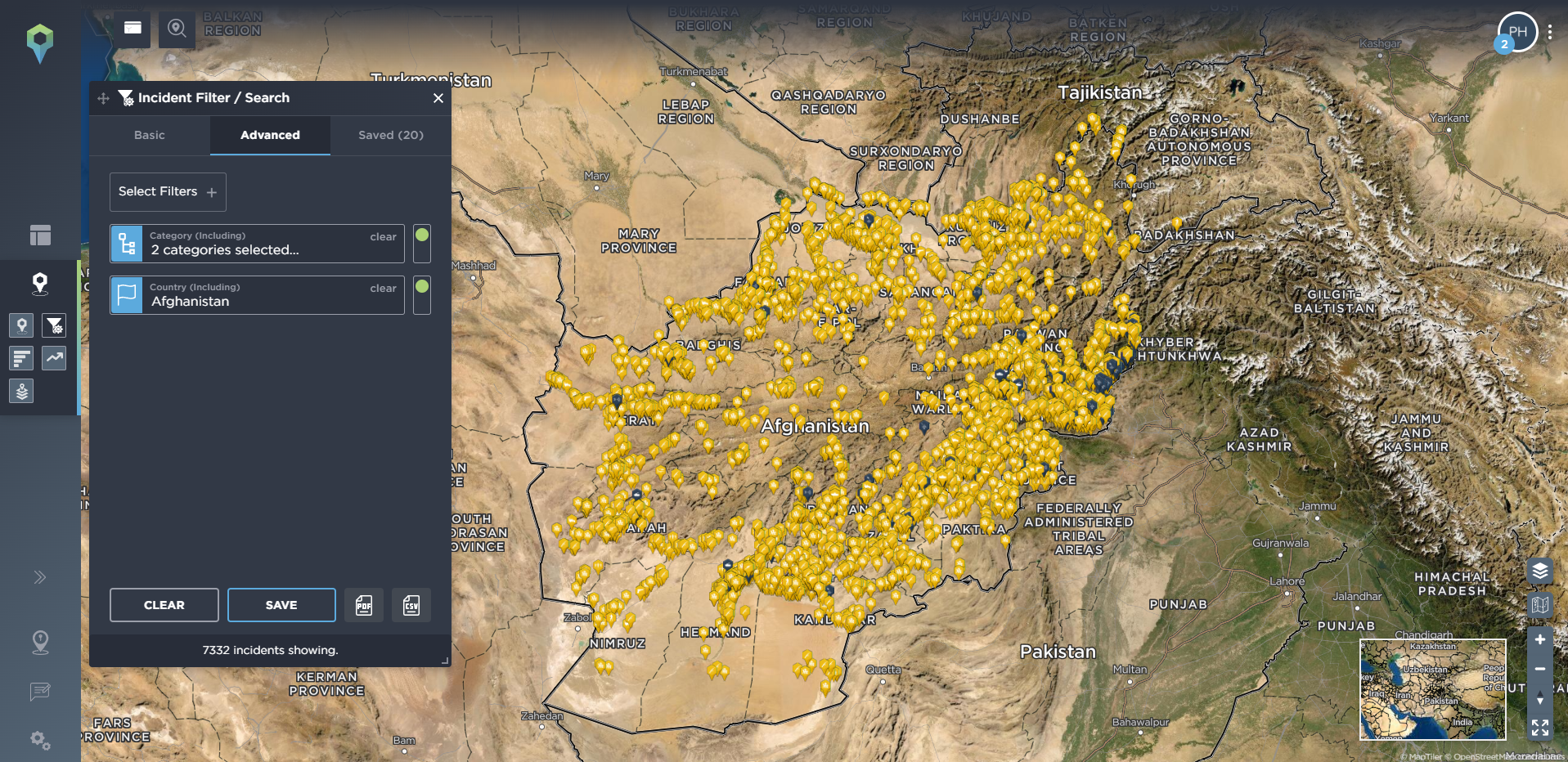The Taliban on Twitter: How the group uses social media
This article on how the Taliban uses social media was originally published on 24th July 2019 - it has been updated on 25th July 2022, with a section on how the Taliban takeover of Afghanistan has impacted the group's use of social media.
The Afghan Taliban have long used social media to support their activity on the ground in Afghanistan. Taliban social media use has utilised well known platforms such as Twitter, Facebook and Telegram in order to disseminate their own version of events after skirmishes. This article aims to not only describe the methods used by the Taliban, but also explain the importance of the use of social media in modern Afghanistan.
Fighting in Afghanistan takes place on a daily basis across the country with no respite in almost every province. Fighting is generally restricted to the rural areas of the country, which over the course of time have become infamous for being mountainous, sparsely populated and difficult to traverse. The impact that this has on media coverage of the fighting is predictable, as many Afghan and foreign journalists struggle to access information and details regarding recent clashes.
The lack of information coming from the ground therefore becomes an opportunity, as either side can aim to acquire a monopoly over the spread of information. Filling this information gap consequently becomes the aim of the Taliban social media campaigns as well as the Afghan Government, with the end goal being to shape perceptions of their respective operations. After each incident, the Taliban and the Afghan Government begin to produce and then release information which compliments their own narratives, with both sides employing similar methods.
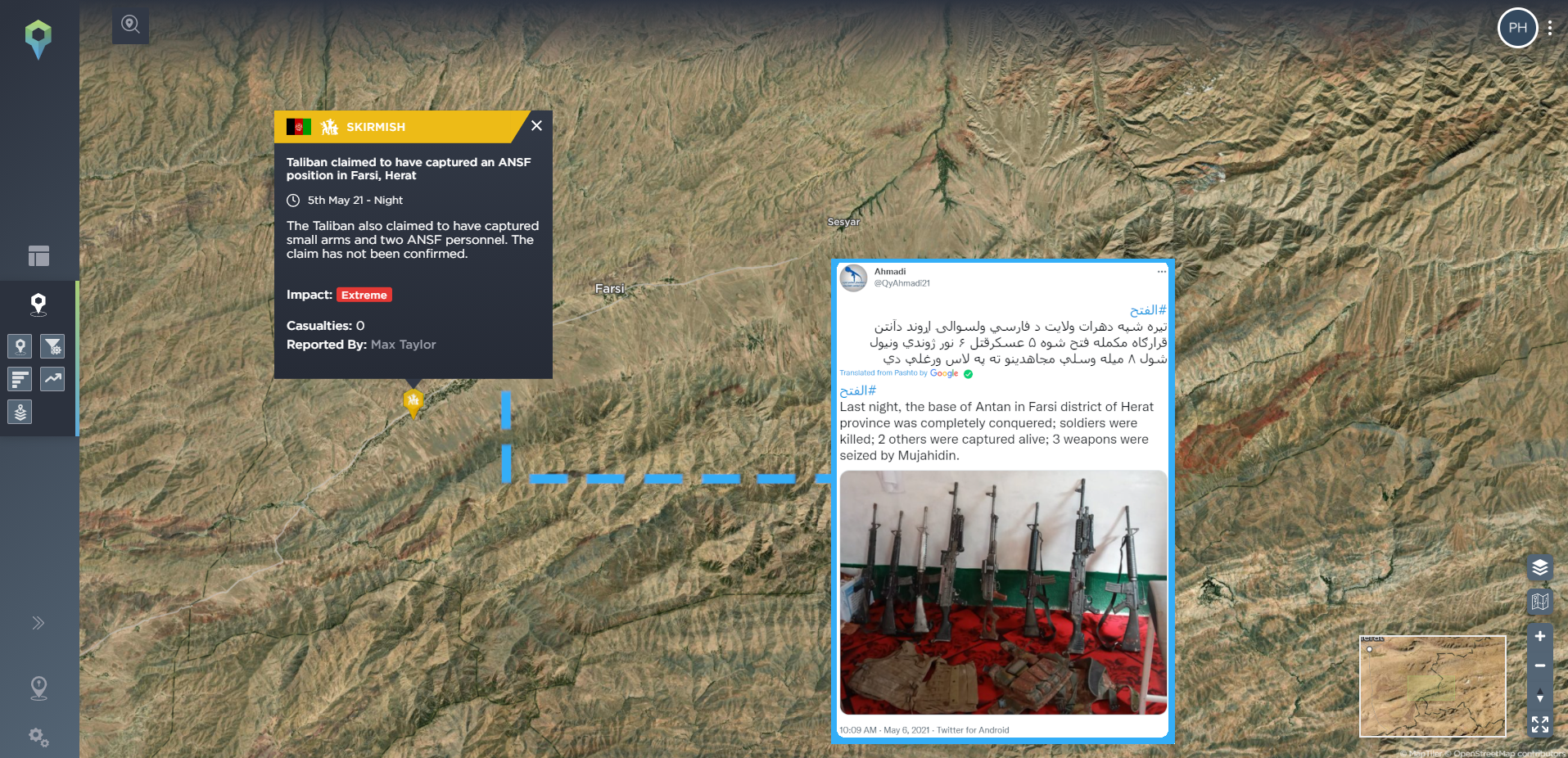
An example of the Taliban releasing information on Twitter, in this case claiming the capture of an Afghan Security Forces position and seizure of weapons
Immediately after an engagement, a social media account run by an official spokesperson of the Taliban, which boasts over 50,000 followers, begins to produce Tweets describing in detail the Taliban version of events. The Tweets released by the account are short, released in multiple different languages (including English) and are often accompanied by graphic images and videos claiming to be from the fighting.
Pictures showing militants equipped with high-tech equipment and small arms make for a tempting retweet from other Twitter accounts with an interest in the region. The Tweets are then immediately shared or copied by multiple pro-Taliban accounts, increasing the audience and traction of the original posts.
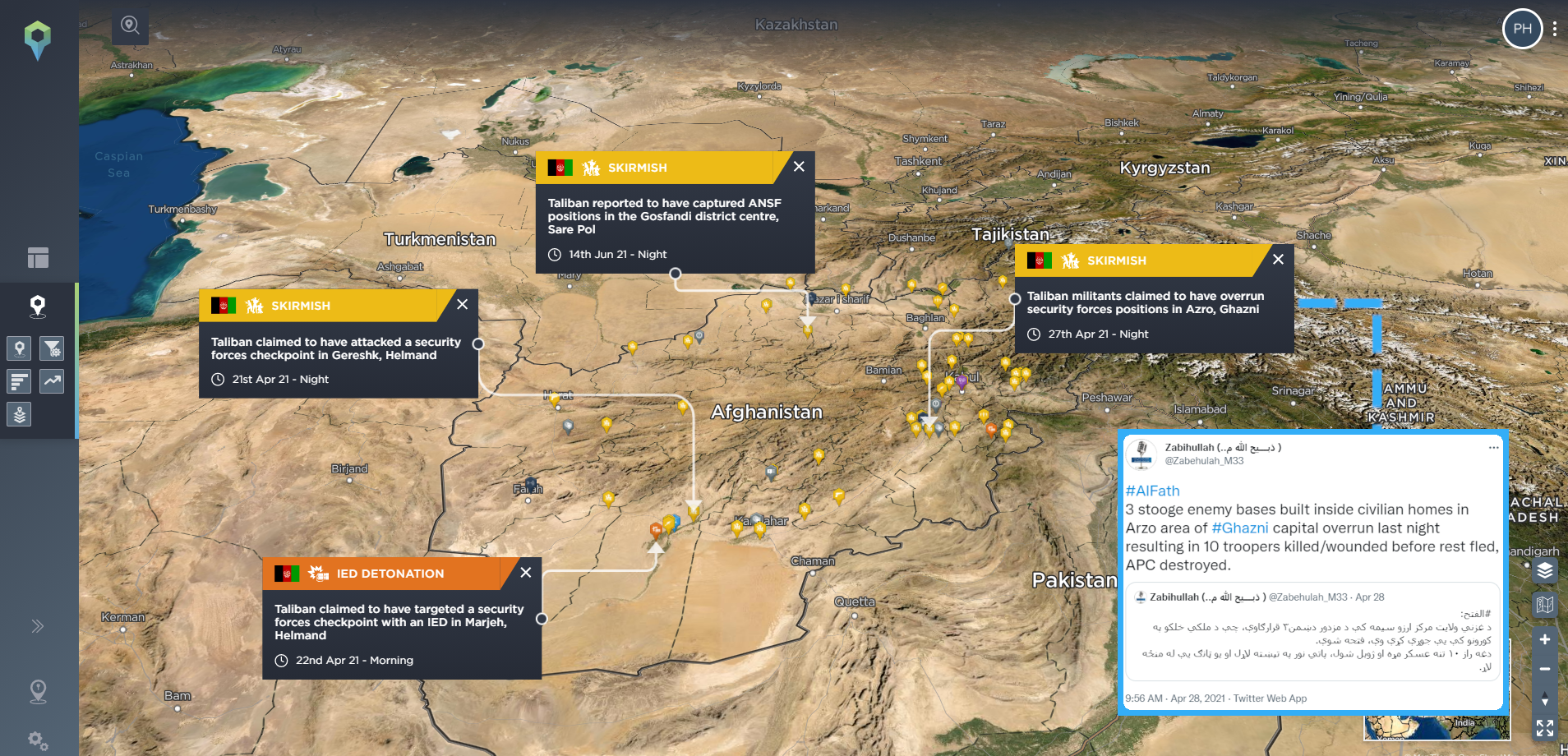
The Taliban consistently used Twitter to promote their narrative throughout the 2021 offensive
The result is best shown in the form a hypothetical case study. If a skirmish were to take place between the Afghan security forces and the Taliban in the Sangin district of Helmand Province, the Twitter ‘hashtag’ #Helmand is within hours inundated with images taken directly from the fighting which have been shared by multiple pro-Taliban accounts on social media. Each retweet and share adds additional comments to the narrative.
The language used is always carefully chosen in order to attempt to de-legitimise Afghan security forces personnel and the government itself. Afghan soldiers are often referred to as ‘hirelings’ or mercenaries and foreign forces are referred to as occupiers or invaders. The purpose this select language being to play on the feelings found among Afghans, who often distrust foreign forces and the Afghan government. The images included are often hard to verify, and the lack of features in the backdrop of many of these images makes geo-location difficult.
The validity of the claims made are at times dubious, and the casualty figures given are normally embellished, but this is largely irrelevant. The sheer volume of Tweets conveying the Taliban narrative of events across social media and the speed with which they are released often means that they are the first narrative released.
In turn, the Afghan Government generally tends to release information regarding recent fighting to the national media 24 hours after the fighting took place. The result being that the government narrative is often lost, or distrusted, as the Taliban one has already gained traction on social media within the minds of observers. Furthermore, the reports of the fighting released by the Afghan Government are rarely accompanied with the same media and detail that accompanies the Taliban’s Twitter announcements.
A recent example of false information being spread by the Taliban, more commonly referred to as ‘fake news,’ is a recent incident in which the group claimed to have shot down a B-52 bomber near the Shohrab Airbase in Helmand Province. The claim was false, and no evidence was provided to support it. Nevertheless, the Taliban social media claim gained significant traction both among national and international social media users. The story was picked up by some international media outlets who cautiously reported the incident with headlines along the lines of ‘Taliban claim to have shot down a B-52.’ Simple analysis of the Tweets which flooded Twitter cast immediate doubt on the claim.
Firstly, the images used claiming to show the crashed B-52 were taken from an incident in Guam in 2016 in which a B-52 crashed. Secondly, Shohrab Airbase does not house B-52s. In reality, it later turned out that a drone had crashed/been shot down nearby, and due to either mistranslation or simple opportunism, the Taliban decided to claim the downing of a B-52 instead of a drone. The traction gained by the Tweets, despite the rather blatant holes in the claim, suggest that the Taliban have been highly successful in disseminating their own narratives at a broader level regarding tactical level incidents.
The impact and value of the Taliban social media campaign is hard to gauge, and it is worth highlighting that there are obvious limitations to social media usage as a tool in Afghanistan. Access to the internet in Afghanistan is limited to approximately 15% of the population, many of whom live in the major cities and are from relatively well off families. Furthermore, only 9% of Afghanistan’s population are believed to use social media.
With these figures in mind, traditional methods such as word of mouth and illustrated pamphlet distribution will still retain a vital role in the spread of information, particularly in the rugged rural areas of the country. This article is not suggesting that the social media front of the fighting is more important than the fighting taking place on the ground, or even suggesting that it is a front in its own right. Instead, this article aims to highlight that social media usage in Afghanistan is used to augment and support ongoing operations, acting as a force multiplier. The use of Twitter, Facebook and Telegram to disseminate news means that the Taliban are able to connect their tactical level operations with their broader ideological narratives.
The Afghan Government and their foreign allies were at first slow to respond to the inundation of social media with the Taliban narrative, and relied mostly on cumbersome press releases which fell short of the mark. However, more recently a number of accounts have emerged which support the government narrative and use similar methods to those of the Taliban. The pro-Government Tweets often come with images of heavily armed Afghan special forces carrying out night raids or pictures of captured militants. Also much like the Taliban, the casualty figures provided are often highly dubious.
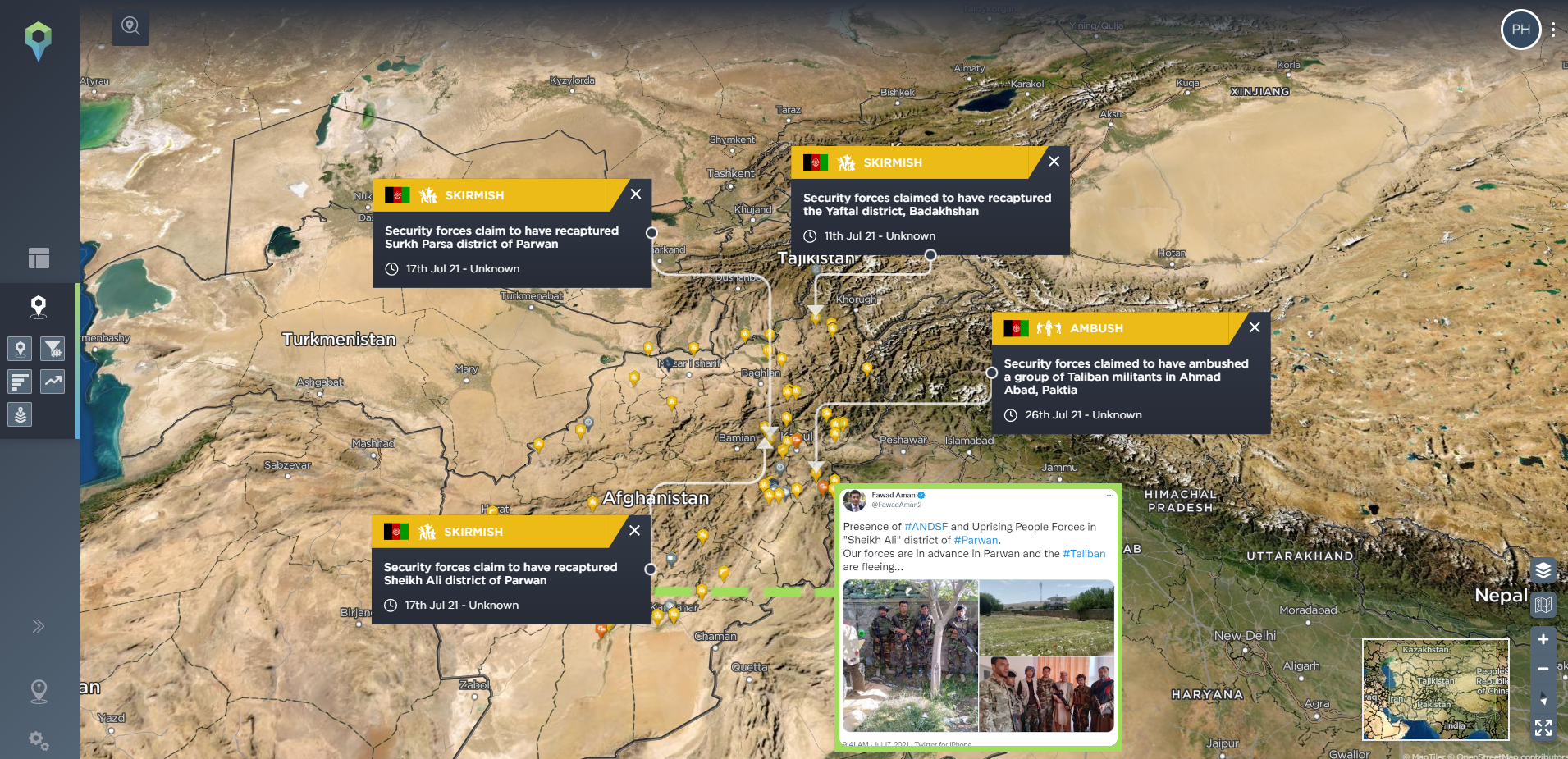
Afghan Security Forces were slow to embrace using social media but now use similar methods to those of Taliban-affiliated accounts
The result of both sides digging in on social media has created a somewhat unique situation, in which Twitter profiles representing high ranking US military staff have been engaged in Twitter spats with the Taliban main account over specific details regarding recent incidents, a phenomenon unique to the modern era.
The Taliban have not only manipulated social media in their war against the Afghan Government, as at the time of writing, heavy fighting is ongoing in Kunar Province between IS-KP and the Taliban. In the social media side of this front, the Taliban have a large advantage. Crack downs among social media companies have forced Islamic State away from mainstream social media, making finding IS-affiliated accounts relatively difficult. The Taliban on the other hand, are still permitted to use platforms such as Facebook and Twitter largely unhindered. The Taliban also maintain an official webpage which can be found through a simple google search.
During the fighting in Kunar, the Taliban have employed similar social media methods to those used against the Afghan Government. Carefully chosen language and claims aim to delegitimise IS-KP, and videos and photos add to the Taliban narrative. In the fighting in Kunar, the Taliban have claimed that IS militants are being sheltered by the Afghan Government (much like they claimed during an offensive in Jowzjan Province.) The accusations are part of their broader narrative which ultimately aims to delegitimise the Afghan Government and their foreign backers. In other words, the Taliban are linking their tactical level operations with their political goals through the use of social media.
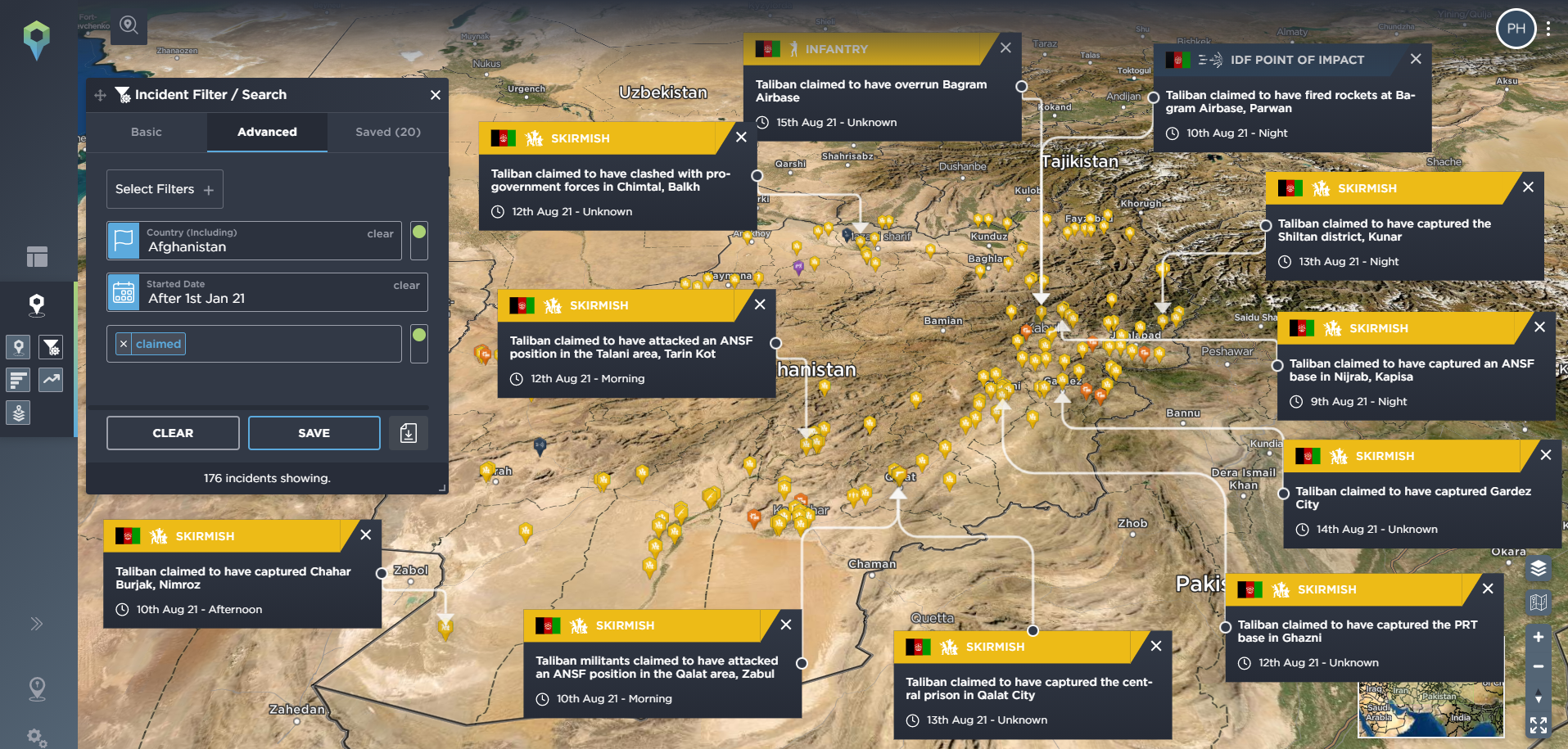
The Taliban continued to use social media as an effective propaganda and communications tool during their rapid advance through the country at the start of August 2021
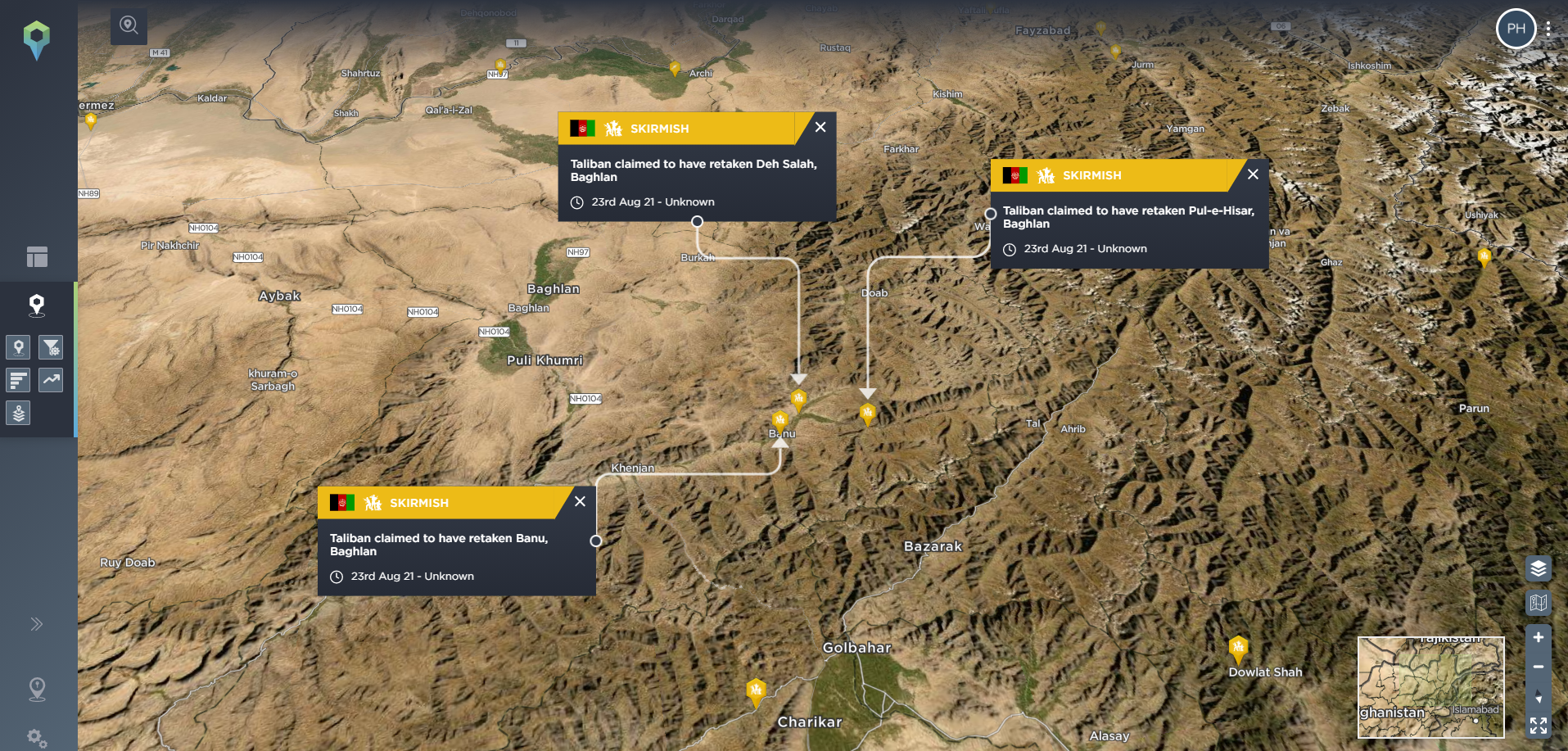
And even after taking the country, the group continue to use the platform as way to spread their narrative.
How has the Taliban takeover impacted their use of social media?
Since the Taliban seized Afghanistan in 2021, the group’s use of social media has changed very little in that various platforms are still used primarily to disseminate narratives. As before, Twitter hosts a large concentration of Taliban accounts, though the Taliban’s acquisition of government ministry accounts and Afghan media sites such as Bakhtar News has seen the group shifting to using these accounts to spread information, rather than small informal Taliban affiliated profiles which were common pre-2021. Perhaps the most noticeable change since the Taliban seized power in Afghanistan in 2021 has been the target audience. Rather than focusing on tactical level fighting, the Taliban have instead often focused on broader political issues such as human rights, accusations of abuses, girls education and international relations.
Interestingly, the Taliban now find themselves in the same position that the Afghan government found itself in pre-2021. The Taliban currently face an active insurgency from the National Resistance Front (NRF) and other anti-Taliban militias, all of which have attempted to harness sites such as Twitter and Telegram to delegitimize the Taliban, spread video of their recent attacks and spread their own narratives, much like the Taliban did before seizing Kabul. Again, much like the Afghan government pre-2021, the Taliban social media appears to be less dynamic than before and at times has been somewhat cumbersome in responding to opposing narratives. NRF-affiliated media has largely focused on its own tactical activity in an attempt to raise awareness and support abroad, and has also been proactive in spreading its own narrative about events such as war crimes committed by the Taliban in central Afghanistan. The Taliban risk finding themselves in the same situation as the Afghan government pre-2021, where their own narratives often come too late and lack detail, therefore gaining little traction.
As has been stated throughout this report, it is important not to over exaggerate the role of social media and the role it has in Afghanistan. Nevertheless, its impact is still noticeable, and its use by all parties in the conflict highlight that it is still believed to be a valuable tool, when used in as part of a broader strategy. With the Taliban now responsible for running Afghanistan, Taliban-affiliated social media has shifted accordingly, with many official accounts discussing themes such as international economic forums and agreements rather than recent operations. However, as mentioned, ongoing fighting between the Taliban and the NRF may see the Taliban forces to once again pay more attention to tactical level incidents and using social media to support their own operations.
Social media also plays a key role in our operations here at Intelligence Fusion. Our team gathers information from social media, multi-language media and thousands of other sources to create a complete and comprehensive picture of the global security landscape, including the Taliban’s use of social media.
But with the vast amount of data available online, it’s one of the greatest challenges faced by an OSINT analyst. In order for our internal analytical team to focus on the ‘so what’ context of intelligence collection, we’ve developed our own datamining algorithm using artificial intelligence to identify crucial information at a faster speed, overseen by our 24/7 operations centre to ensure accuracy throughout.
This comprehensive global coverage means we’ve built up an extensive knowledge of different regions around the world – including Afghanistan and Central Asia. Every month, our Senior Regional Analyst for Asia puts together an intelligence report for Central Asia, sent directly to the inbox of email subscribers. If you’d like to get the latest updates from the region, you can sign up here.
